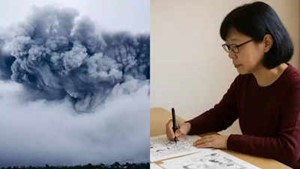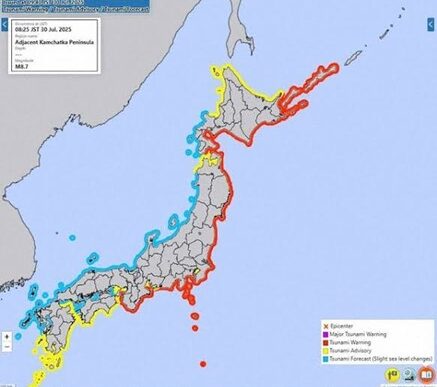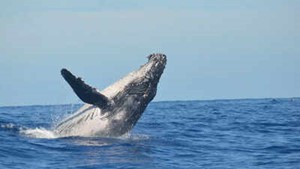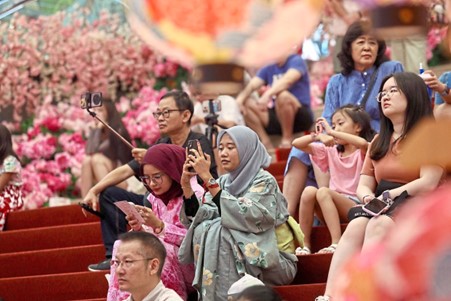Baba Vanga Prediction 2025: In an eerie twist of fate, a prediction made months ago by Japan’s self-proclaimed modern-day prophet—often referred to as the country’s “Baba Vanga”—has resurfaced after a powerful earthquake off the Russian coast triggered a tsunami warning across Japan’s Pacific shoreline.
Back in January 2025, 84-year-old Mitsuko Aoyama, a mystic and clairvoyant who has garnered a cult-like following for her accurate past predictions, claimed that Japan would witness a “giant wall of water” in July, specifically pointing to an “unusual disturbance from the northeast sea.” While many dismissed the statement as vague or alarmist, her followers are now pointing to the chilling accuracy of her forecast.
Prophecy Meets Reality?
Early Tuesday, a magnitude 8.3 undersea earthquake struck east of Russia’s Kamchatka Peninsula. In response, Japan’s Meteorological Agency issued a tsunami warning of up to 3 meters for large swaths of the country’s Pacific coast—from Hokkaido down to Wakayama. The agency has urged people in low-lying coastal areas to evacuate to higher ground immediately.
As of now, no large-scale waves have made landfall, but authorities remain on high alert and emergency protocols have been activated nationwide.

A Coincidence—Or Something More?
While the scientific community relies on seismic monitoring and tectonic data to predict and respond to disasters, the timing of Aoyama’s forecast has caught the attention of social media users and conspiracy theorists alike. Hashtags like #BabaVangaOfJapan, #MitsukoPrediction, and #JulyTsunami have been trending on Japanese Twitter (X) and TikTok since the tsunami warning was issued.
Skeptics argue that Japan is prone to seismic activity year-round, and that such predictions are bound to occasionally align with real events. “We must not allow superstitions to interfere with real-time disaster preparedness,” said Dr. Hiroshi Tanaka, a geologist at the University of Tokyo. “The focus should be on facts, not fear.”
Still, others see Aoyama’s words as a reminder of the cultural role that spiritual beliefs and folklore play in Japan’s understanding of natural disasters.
Past Predictions That Stirred Curiosity
Mitsuko Aoyama has previously made headlines for her alleged foresight. She reportedly predicted the 2011 Tōhoku earthquake and Fukushima disaster, as well as the unexpected volcanic eruption at Mt. Ontake in 2014. While never scientifically verified, her statements often go viral—especially during times of uncertainty.
In January, she said in a televised interview:
“The sea from the northeast will roar in anger. People must not turn their back to the water in July. It will come not once, but with echoes.”
That last line is now being interpreted by her followers to mean possible multiple waves or aftershocks.
Science, Safety, and Preparedness
Regardless of mystical predictions, Japan’s preparedness infrastructure remains one of the best in the world. Local authorities continue to monitor sea levels, and evacuation systems are being utilized to prevent loss of life.
Japan’s Meteorological Agency has clarified that while a tsunami is expected, its height and impact will vary by region and topography. The public is urged to stay updated through official channels and avoid spreading panic.
Final Thoughts about Baba Vanga Prediction 2025
Whether Mitsuko Aoyama truly foresaw the current tsunami threat—or whether it’s a remarkable coincidence—remains open to interpretation. But her resurfaced prediction adds a layer of unease to an already tense situation.
As scientists and first responders do their job on the ground, this moment serves as a reminder of Japan’s deep cultural relationship with nature, spirituality, and the mysterious forces that sometimes seem to shape both.
For Official Updates:
- Japan Meteorological Agency: www.jma.go.jp














